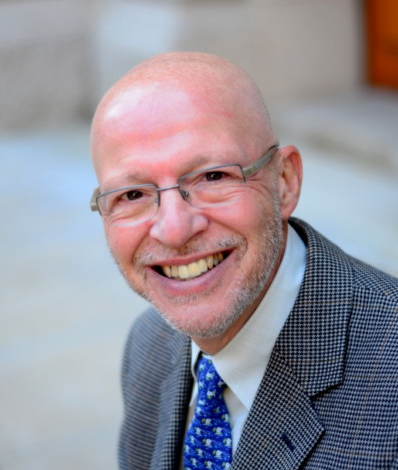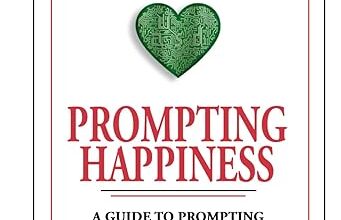Meeting the Challenges: Embracing Sustainability for a Thriving Future

In a world grappling with pressing environmental concerns, the question looms large for businesses: How can we run companies more sustainably? The path to sustainability begins with understanding the importance of measuring one’s impact and taking decisive action. Embracing the mantra “you can’t manage what you don’t measure,” industry leaders recognize the significance of quantifying their carbon footprint to make informed decisions. Anthony Cortese, President of Second Nature, an ardent believer in the power of numbers, sheds light on the essential role of data in the journey towards a greener future.
Anthony Cortese has dedicated his career to championing environmental efforts and promoting sustainability. His journey began in the early days of the U.S. Environmental Protection Agency (EPA) in 1970, where he played a pivotal role as one of its initial employees. Later, as the commissioner of the Massachusetts Department of Environmental Protection (MassDEP) from 1979 to 1984, Cortese developed groundbreaking programs to tackle various environmental challenges, including air and water pollution, hazardous waste, and drinking water quality.
In the late 1980s, Cortese’s passion for environmental education led him to become the first dean of environmental programs at Tufts University. He founded the university’s Environmental Literacy Institute, pioneering the integration of environmental education across all disciplines. Recognizing the importance of nurturing sustainability from a young age, Cortese sought to make environmental literacy an essential part of every student’s learning experience, irrespective of their major.
In 1993, Cortese co-founded Second Nature, a nonprofit organization based in Boston, focused on promoting sustainability within colleges and universities. Through Second Nature’s initiatives, he has been instrumental in encouraging educational institutions to embrace sustainable practices and environmental responsibility. His commitment to sustainability extends even further with the launch of the Intentional Endowments Network, which he co-founded to help tax-exempt organizations align their endowment investments with their health, social, and environmental values. Anthony Cortese’s tireless efforts continue to inspire a greener, more sustainable world for generations to come.
With the global population soaring to unprecedented levels and economic output surging, the cost to our planet becomes ever more apparent. Vital ecosystems, such as fisheries, forests, wetlands, and grasslands, bear the brunt of human activities, experiencing long-term declines. Alongside these environmental challenges, poverty and inequality cast a dark shadow, affecting billions of lives worldwide. President Cortese emphasizes that meeting the basic needs of the projected 9 billion people by 2050 necessitates preserving Earth’s capacity to sustain a thriving population.
At the core of sustainability lies the concept of managing one’s carbon footprint—a measure of the impact a company or organization has on climate change. To prioritize actions and set goals, knowing one’s carbon footprint becomes indispensable. Direct emissions, under the organization’s control, can be addressed through strategies like switching to electric vehicles or adopting fuel-efficient equipment. However, equally vital are the indirect emissions, linked to the products and services bought or sold, where organizations can wield influence.
Cortese extends a challenge to all businesses: Take charge of your direct emissions and set reduction goals; engage suppliers to understand your indirect impact and explore low-carbon options. Be prepared for customers’ inquiries on the impact of your goods and services, paving the way for a low-carbon future. In the journey towards sustainability, data is the key that unlocks the power to manage and mitigate environmental impact effectively.
In a world where every decision counts, Cortese’s call to action resonates powerfully. Businesses must recognize that measuring their impact is not merely an exercise in data gathering—it is the compass that guides them towards a future of sustainable practices. By adopting transparency and proactive measures, companies not only protect the environment but also influence their suppliers and customers to embrace a low-carbon ethos. As President Cortese states, “you can’t manage what you don’t measure”—so let’s measure, manage, and make a difference for the world we share.
In the relentless march of time, the human population and global economic output have surged to unprecedented heights over the past two centuries. With a staggering 6.7 billion people now inhabiting our planet, this exponential growth has brought about tremendous energy consumption and economic expansion. But this impressive progress has come at a considerable cost—one that cannot be ignored any longer. Our planet’s delicate living systems, the invaluable resources of fisheries, forests, wetlands, and grasslands, are now languishing in long-term decline, thanks to human activities that have taken a toll on Mother Earth.
Beyond the glaring environmental degradation, a sinister specter looms—poverty and inequality. Shockingly, 3.2 billion people toil to survive on less than a mere $2.50 a day, while an astronomical one billion people lack access to clean drinking water. This grave chasm between the haves and have-nots knows no borders; it extends its grasp worldwide. In the face of an anticipated global population of nine billion by 2050, the pressing question takes center stage: How can we bridge this ever-widening gap and meet the fundamental needs of a burgeoning human race, all while safeguarding our planet’s capacity to nourish a flourishing civilization?
Amidst this seemingly daunting panorama emerges a beacon of hope—the concept of sustainability. Rooted in the idea of maintaining Earth’s capacity to support future generations, sustainability beckons us to tread lightly on this wondrous blue orb we call home. It beckons us to employ our resources efficiently and embrace a lifestyle that cherishes nature’s income over her finite capital. A paradigm shift in thinking is our call to arms. We must introspectively redefine our place within the natural world, fully grasping our role as stewards of this magnificent planet. The reverberations of our actions, touching every living being, should guide our every step.
Gratefully, tangible solutions lie within reach—lifelines that can usher us towards a sustainable future. Embracing renewable energy sources is a pivotal stride in this endeavor, as is honing our energy efficiency to unparalleled heights. With circular production and consumption practices, we bid farewell to the notion of waste, recognizing every product’s potential to be reborn as nutrients for another. By nurturing nature’s inherent regenerative prowess, we harmonize our actions with the planet’s inexhaustible ability to provide for our needs, a virtuous circle of life that sustains us for generations to come.
Yet, achieving sustainability’s promise necessitates a tapestry of sagacious economic strategies and incentives. Embracing sustainable forestry, agriculture, and fisheries becomes a paramount priority—ensuring that economic growth and environmental preservation walk hand-in-hand. In this realm, the very essence of sustainability unfurls before us; an equilibrium where the prosperity of all individuals intertwines with the conservation of Earth’s irreplaceable resources. An intricate interplay of economy and ecology charts our course towards an ever-robust and enduring world.
As the global push for sustainability gains momentum, the spotlight is now on the instrumental role of measurement in shaping a greener tomorrow. The shift towards virtual events stands as a compelling example of the immense power held within small choices, demonstrating how informed decisions can drive meaningful change. With the understanding that measuring sustainability is key to unlocking effective strategies, businesses, organizations, and individuals alike are prompted to embark on a transformative journey towards a brighter and more sustainable future. By embracing the far-reaching possibilities of mindful choices, we chart a course towards environmental preservation, fostering a legacy of stewardship for generations to come.
Amidst an array of unprecedented challenges—spanning from exponential growth to environmental degradation, poverty, and inequality—we now find ourselves at a crucial juncture. Embracing sustainability as our guiding North Star becomes imperative, urging us to recognize the intricate interdependence between humanity and nature. As we navigate this critical path, practical solutions and thoughtful economic systems emerge as the driving forces behind securing the well-being of all creatures and safeguarding the invaluable resources our planet provides.
This is the moment of defining significance—a crossroads where collective action holds the power to forge thriving communities and harmonious ecosystems. With the pen of change in our hands, we script a legacy destined to resonate across generations. As we boldly wield our brushes, let us seize this opportune time to create a masterpiece—a world flourishing with equity, vitality, and a steadfast commitment to sustainability.
The time for action is now. No longer can we afford to remain idle or indifferent to the calls of our imperiled planet. Together, we can weave a vibrant tapestry—a vision uniting humanity and Mother Earth in harmonious coexistence. This beckoning world of flourishing prosperity, equality, and ecological preservation awaits our tender care.
Thus, we unite, driven by the fervor of possibility and the wisdom of our choices. Our actions become a testament to our unwavering commitment, as we toil diligently to safeguard our ecosystems’ harmony and uplift each and every soul on this shared journey. Today, we embark on a path of purpose and progress—a collective pursuit of a way of life that will shape the future—for our children, for our planet, and for the harmonious legacy we forge together.



